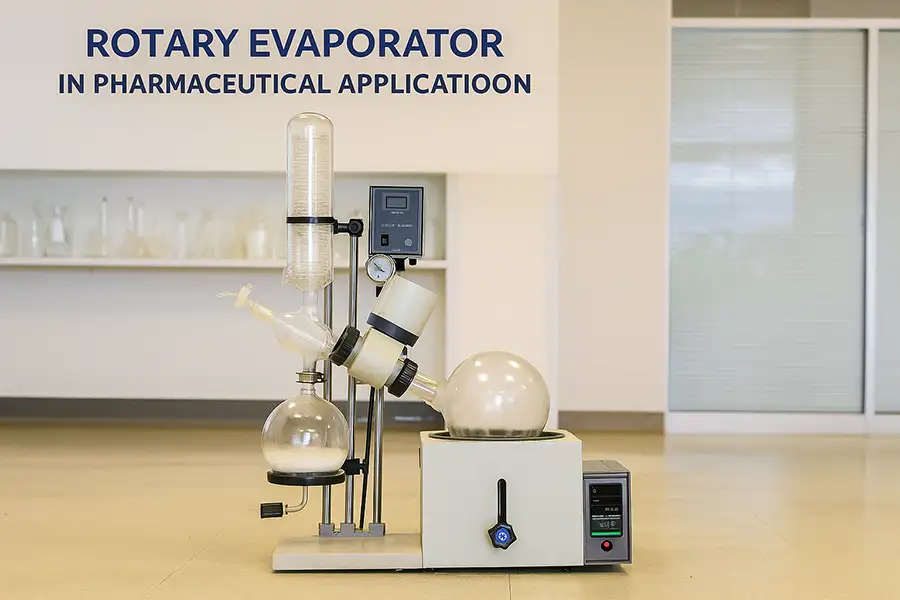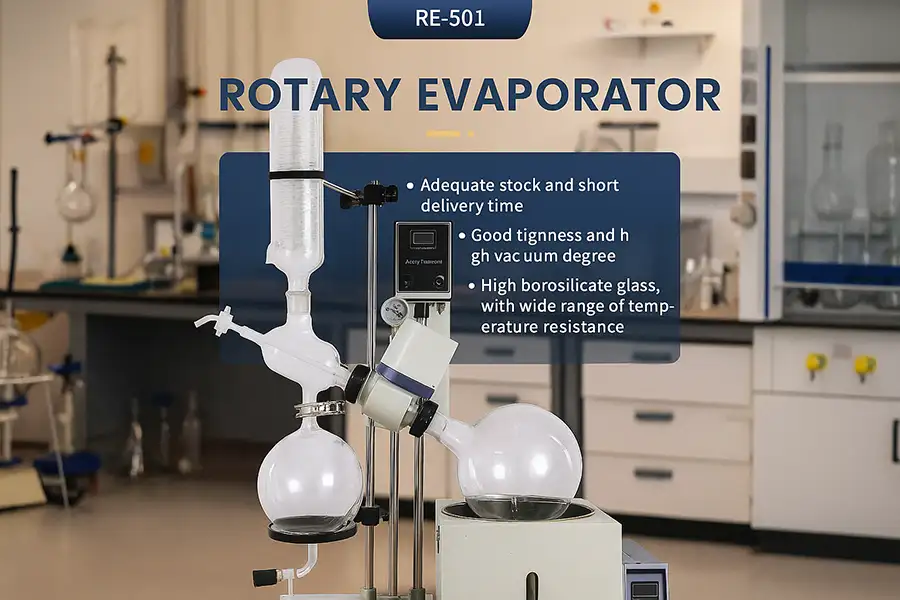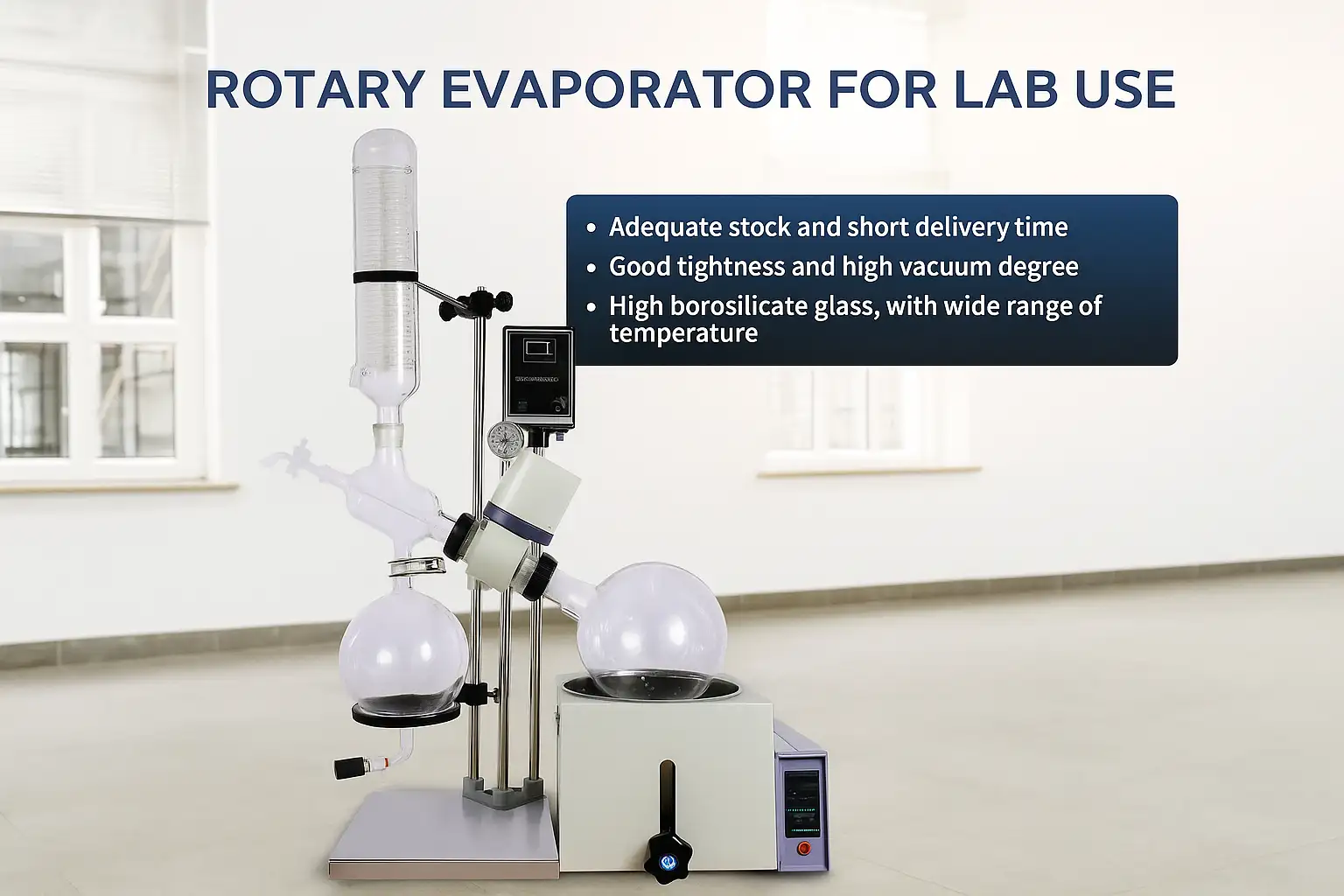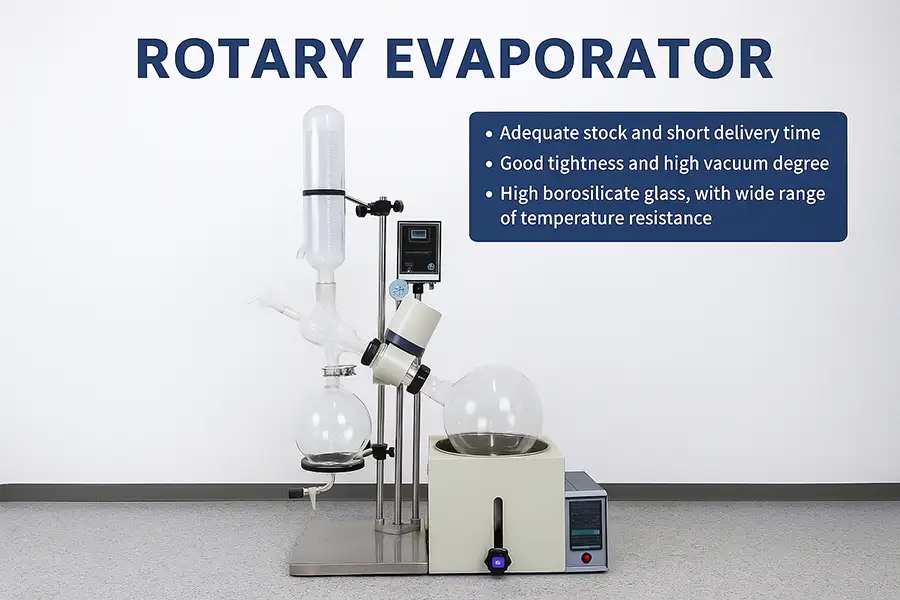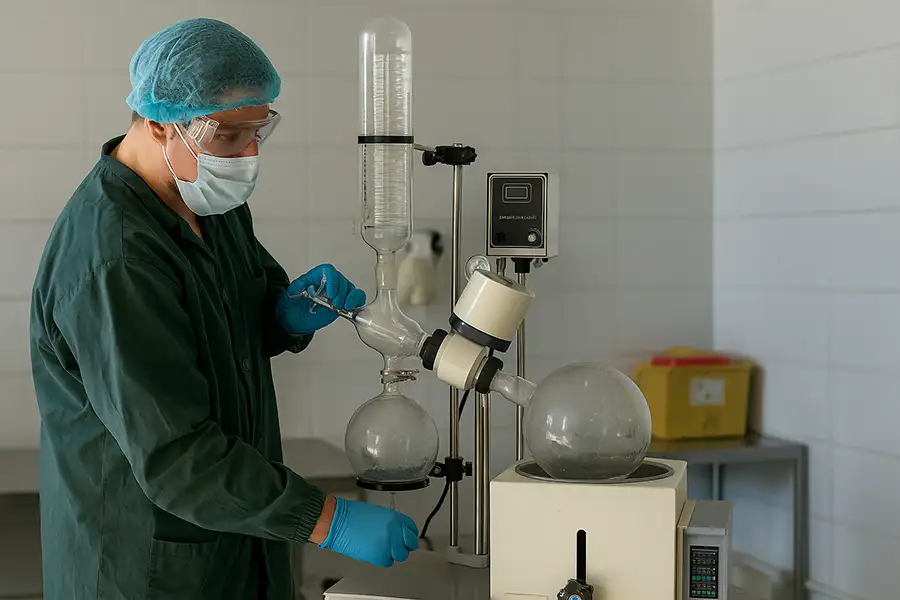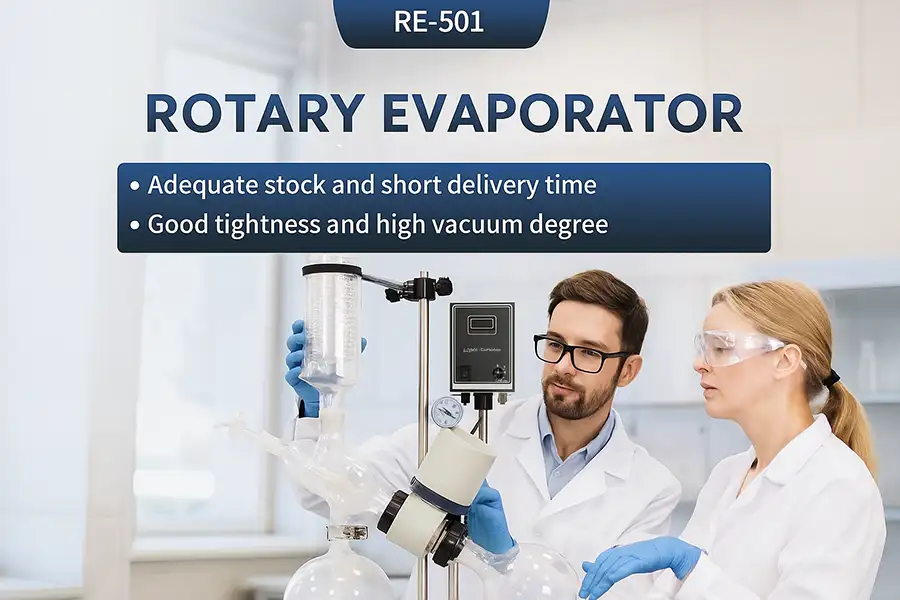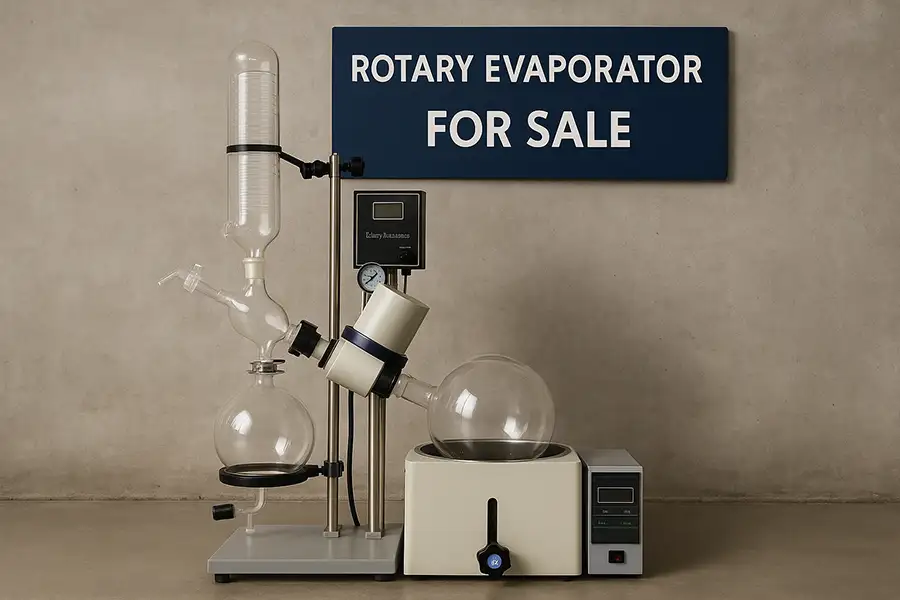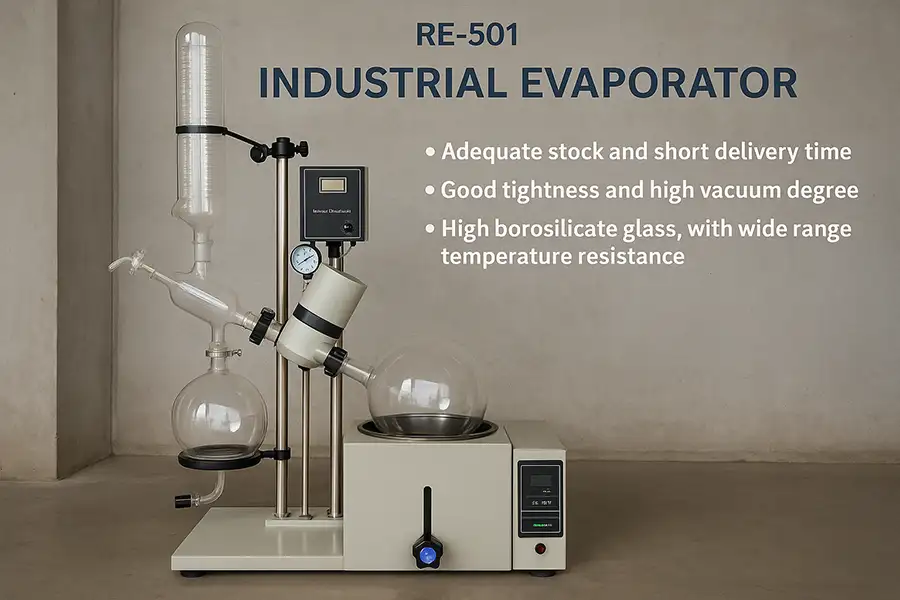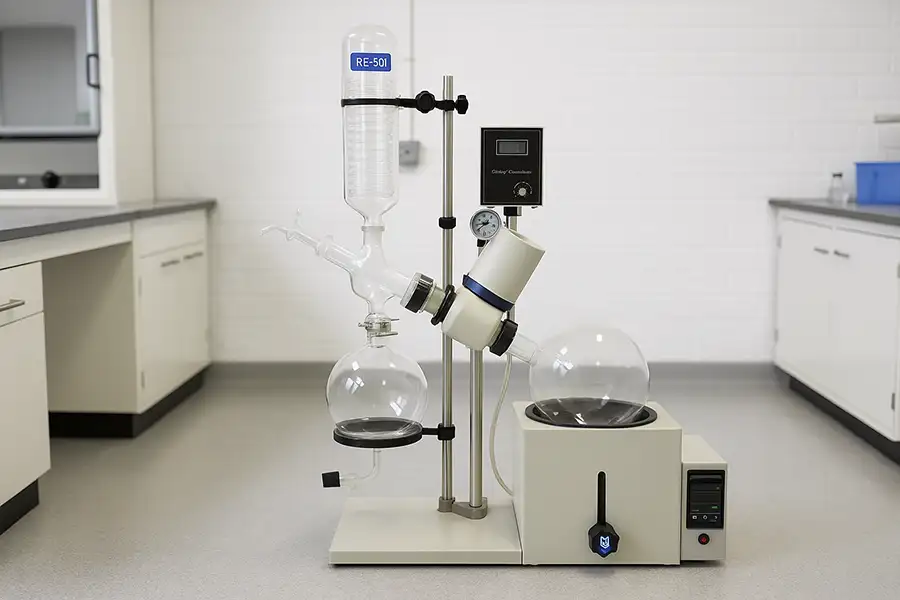Complete Guide to 50L Rotary Evaporators
Complete guide to 50 liter rotary evaporators - working principles, applications, and industrial significance...
Read MoreWhat Does a Rotary Evaporator Do?
Discover what a rotary evaporator does, how it works, and why it is essential in laboratories and chemical industries. Learn about different models like 2L, 5...
Read MoreRotary Evaporator Price - Complete Buying Guide
A comprehensive buyer's guide to rotary evaporator pricing. Explore cost factors by capacity (2L to 50L), market trends, and expert tips for both laboratory a...
Read MoreRotary Evaporator Parts – Complete Guide for Laboratory Use
Master rotary evaporator components with our definitive guide. Explore parts diagrams, maintenance protocols, and selection criteria for laboratory systems. D...
Read MoreRotary Evaporator Chemistry Explained
Explore the essential role of rotary evaporator chemistry in modern laboratories. This comprehensive guide explains how rotovaps work, their core components, ...
Read MoreHow to Use Rotary Evaporator - Complete Guide for Laboratory Work
Master rotary evaporator operation with our comprehensive laboratory guide. Step-by-step instructions, safety protocols, efficiency tips, and model selection ...
Read MoreRotary Evaporator Guide - Lab Equipment for Sale
Complete guide to rotary evaporators for sale. Learn how rotovap machines work, their applications in labs & industry, maintenance tips, and how to choose the...
Read MoreHow Does a Rotary Evaporator Work? | Complete Illustrated Guide
Comprehensive guide explaining how rotary evaporators work: step-by-step process, key components, laboratory & industrial applications, and benefits for solve...
Read MoreRotary Evaporator Machine - Complete Guide
Comprehensive guide to rotary evaporator machines covering working principles, components, applications, technical specs, and tips for selecting the right mod...
Read More
